Everything Standards Based Parent Meeting - Oct/Nov 2023
Original Slide Format PDF
Original Slide Format PDF
Everything Standards-Based
Parent Meeting
October/November 2023
A Point of Clarification
The outcome of today’s meeting is not to change the system, rather to provide you with information to support your understanding of the system.
What is Standards-Based Instruction
A Brief Overview
Some of this may seem repetitive for those who have attended the August parent coffee or read through other materials. We’ll review this information to ensure everyone knows some of the basics about this work.
What Is It?
Standards-Based Instruction means teachers intentionally plan their teaching and assessments based on course standards/competencies.
This sounds like an obvious expectation, but it is not common practice to unpack, teach to, and specifically assess course standards.
What Stays the Same?
- Grades are on a 100-point scale with a 50 floor.
- Grades can range from A, A-, B+, B, … to F.
- Grades are recorded in SIS.
- Students have deadlines to turn in work.
- Honors, AP, and Dual Enrollment classes have a GPA incentive or “bump”
- Transcripts will look exactly the same
How are Grades Calculated?
Grades for each standard will be determined by the following criteria:
- Most recent performance on standard (including retake opportunities), particularly if there is a change in rigor.
- ex. Assessing student ability to identify theme in a children’s book as an entry point and later requiring them to do the same for a class novel.
- An average (mean) of performances on the standard if there is a necessary change in setting or medium.
- ex. Assessing the same art standard through three required media: watercolor, acrylic paint, and charcoal.
How does Standards-Based Instruction Help?
- Teachers will be fully aligned on WHAT they are teaching so they can collaborate on HOW they are teaching.
- Students, Parents, and Teachers will know exactly what students know and are able to do. Academic support can be targeted and purposeful.
- Retakes can be offered in the form of formative opportunities and as reassessments on specific standards where the student did not perform well, rather than a full test retake.
Understanding ParentVUE
English 10 Honors Gradebook Example
This is a Grade 10 English Honors gradebook. The teacher has all 8 of their standards showing – here they are listed together by the same date. The standards are named according to this structure: “10.1” for “English 10, Standard 1”, but the important part is the “Assignment Type” column, which specifically lists the standard.
You can see grades listed there under the Score column. Those grades say “Not for Grading”. Note the difference between “Not for Grading” (practice/formative work) and “Not Graded” (summative work that has not yet been assessed or entered.
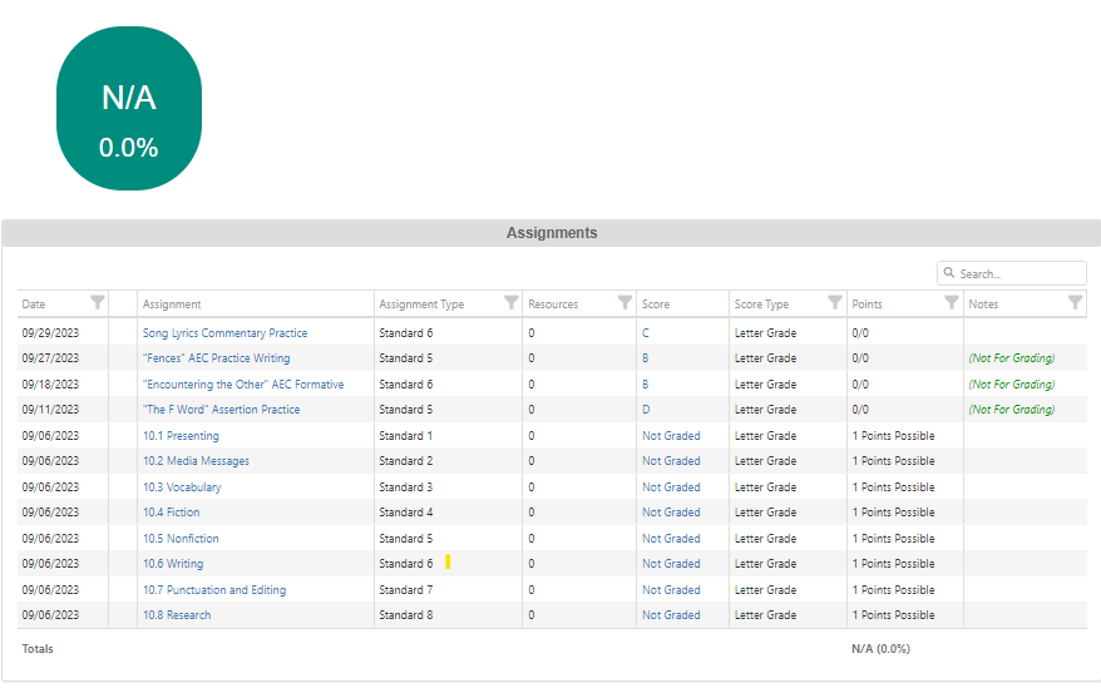
Math Gradebook Example
Here is an example of a math gradebook. Note that the teacher has listed several assignments from the unit, but the standard appears in the “Assignment Type” column. This class has reviewed Standards 3, 6, and 7 – standards are not necessarily taught in numerical order. In addition, you can see the student’s grade in the “Score” column. The “Points” column is part of the gradebook setup and can be ignored.
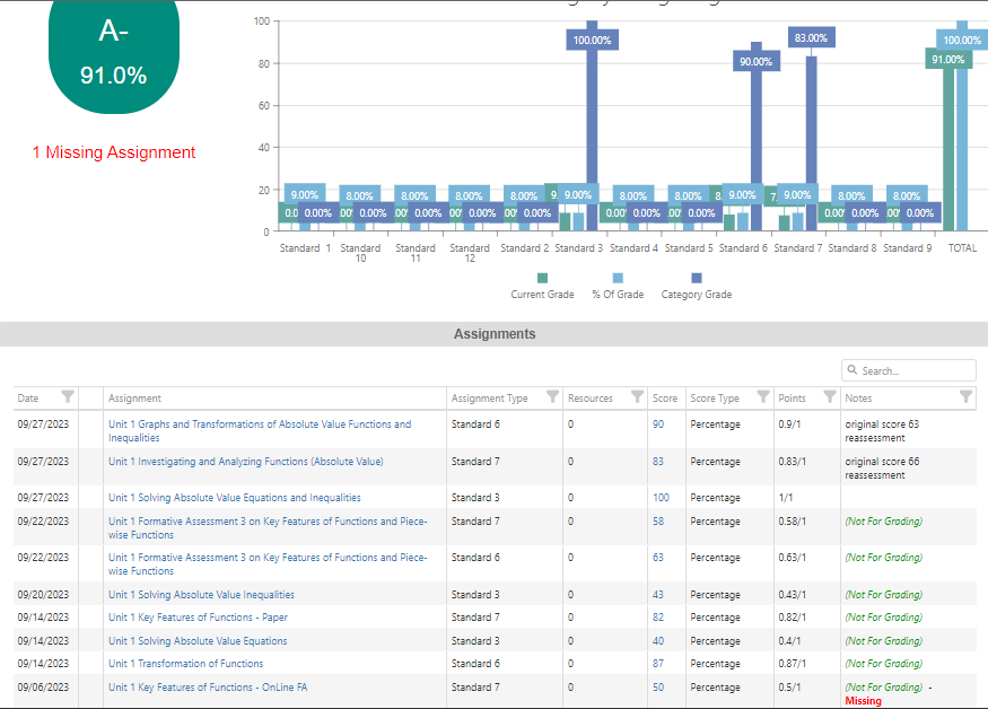
Spanish Gradebook Example
This is a Spanish class. In this course, you see a number of assignments with the same title, but they are attached to different standards in the “Assignment Type” column. In this course, the teachers will take a single summative assessment and break it into standards so you can see how your child performed on each of the standards assessed on the test.
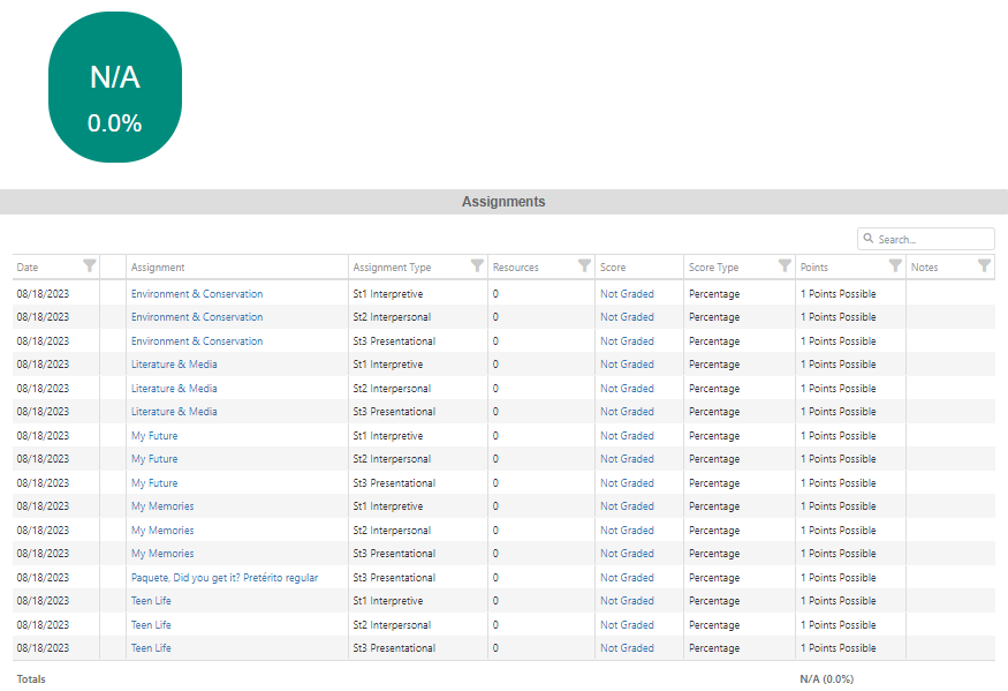
Chemistry Gradebook Example
Finally, this is a Chemistry class. Very similar set up with assignments and assignment types. This teacher enters the grades as “18 out of 20” instead of “90” or “A-” in the Score column.
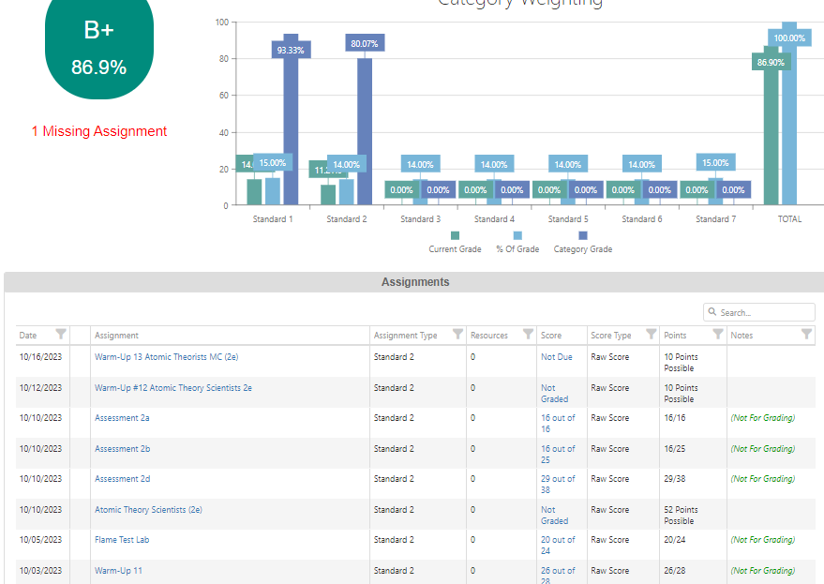
A More Helpful View
In general, the gradebooks are set up correctly and have information about standards-based learning/performance. We recognize that the formatting is not ideal.
ParentVUE
Here is an example of one teacher’s gradebook.
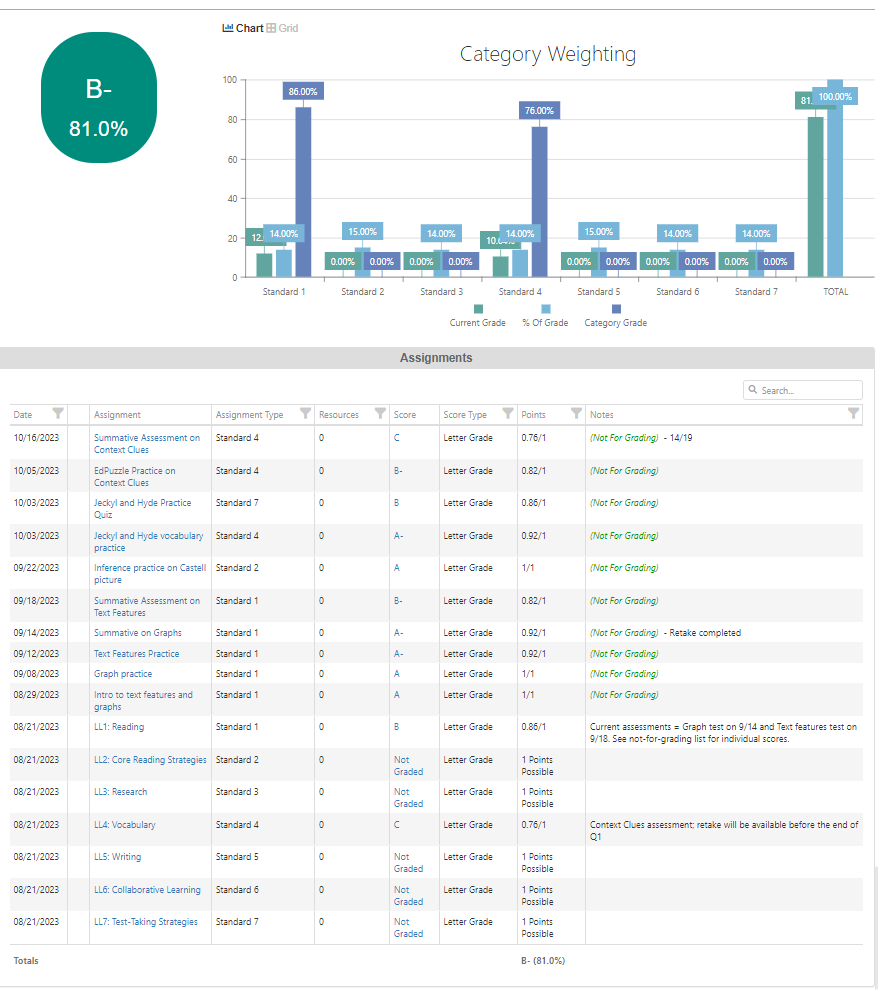
Progress Report
When we ran a progress report, the formatting was greatly improved. The standards are listed separately on the top with the assignments at the bottom. Even better, the teacher added a note at the bottom of the report to provide more context for these grades.
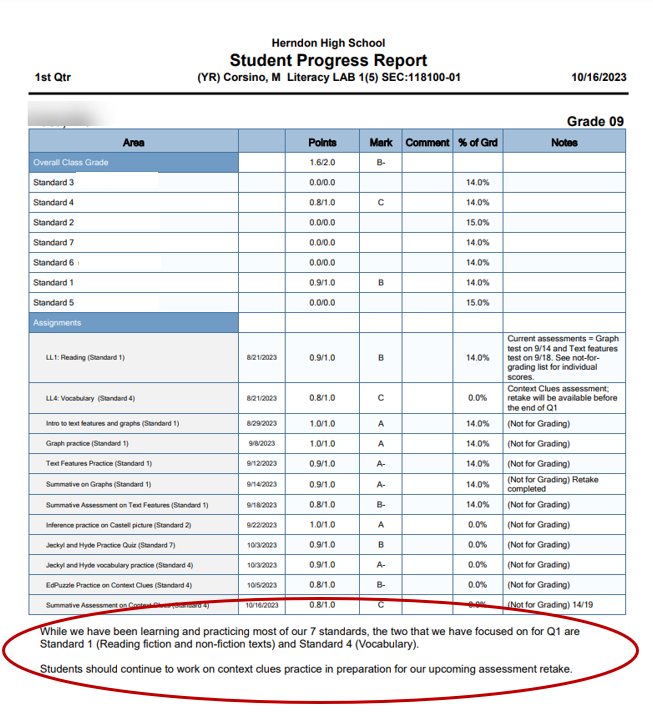
Progress Report - Missing Assignments
In this case (same class), the missing assignments related to the standards are noted in red. Here you can see the 3 missing assignments for Standard 4 seem to be having a major impact on the Standard 4 grade. This report will tell you there are missing assignments (and list them) whether they count for grading or not. Even if they do not “count”, those assignments matter.
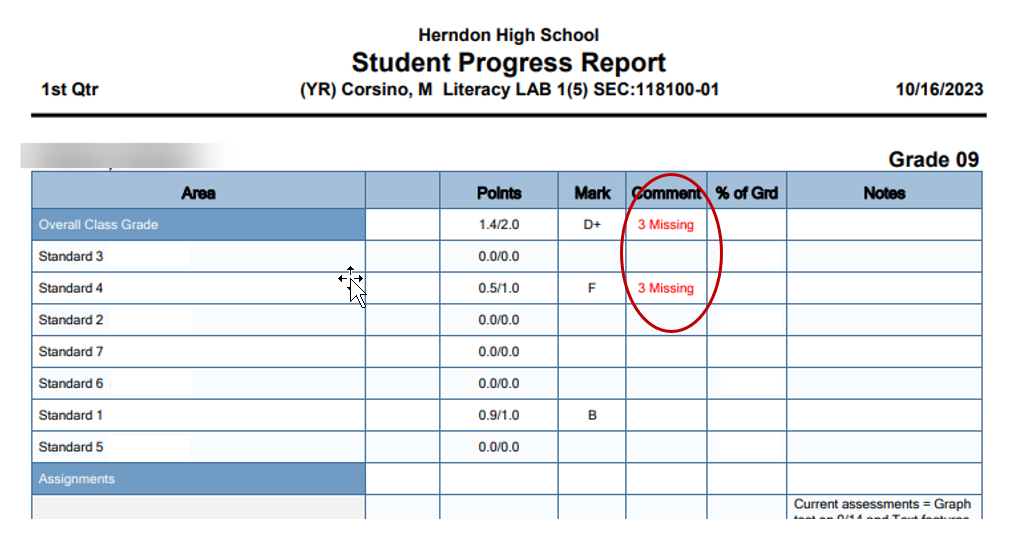
A Commitment from HHS Staff
You will now receive progress reports every 4-5 weeks. Starting this week!
Every teacher is required to send them. The progress reports should show the standards, assignments, and an overall grade. We showed teachers the area for writing notes so they can provide context to help you understand what you are seeing and provide guidance for how to help you/your child. The teachers’ deadline for the first emailing is this Friday.
What Should You or Your Student Do Next?
Fact: Teachers may not export an Overall N/A Grade for 1st Quarter. This was made clear to staff.
- Pay attention to those missing assignments – even Formative Assignments.
- Take a look at the notes on your student’s progress reports. You will see information about what to do with a grade that might be unsatisfactory as well as helpful information about what how to read what is on the report.
What About the Rolling Gradebook?
Quarter 1
Here’s that same gradebook from earlier. Let’s look at where we are now and what will happen throughout the year. Let’s say this is the end of Quarter 1. So far, the student has learned about Standards 1 and 4. Those two grades are now averaged to give the overall grade of B- at the end of the quarter.
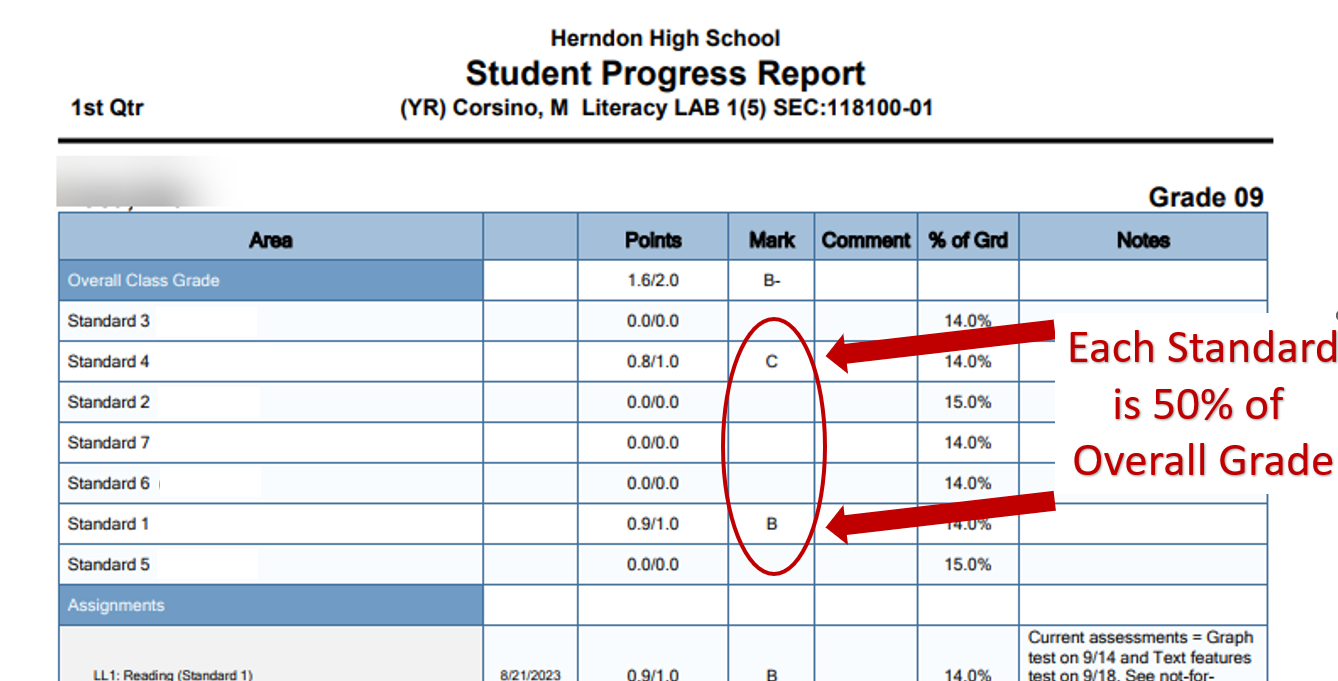
Quarter 2
When second quarter begins, the gradebook is still populated with all of the information from Quarter 1, and we continue to add to it. At the end of Quarter 2, there are additional standards that have been taught (Standards 3 and 7 in this case). For this quarter, each grade counts only 25% of the overall grade. At the end of second quarter, the student’s grade in this class would be a B.
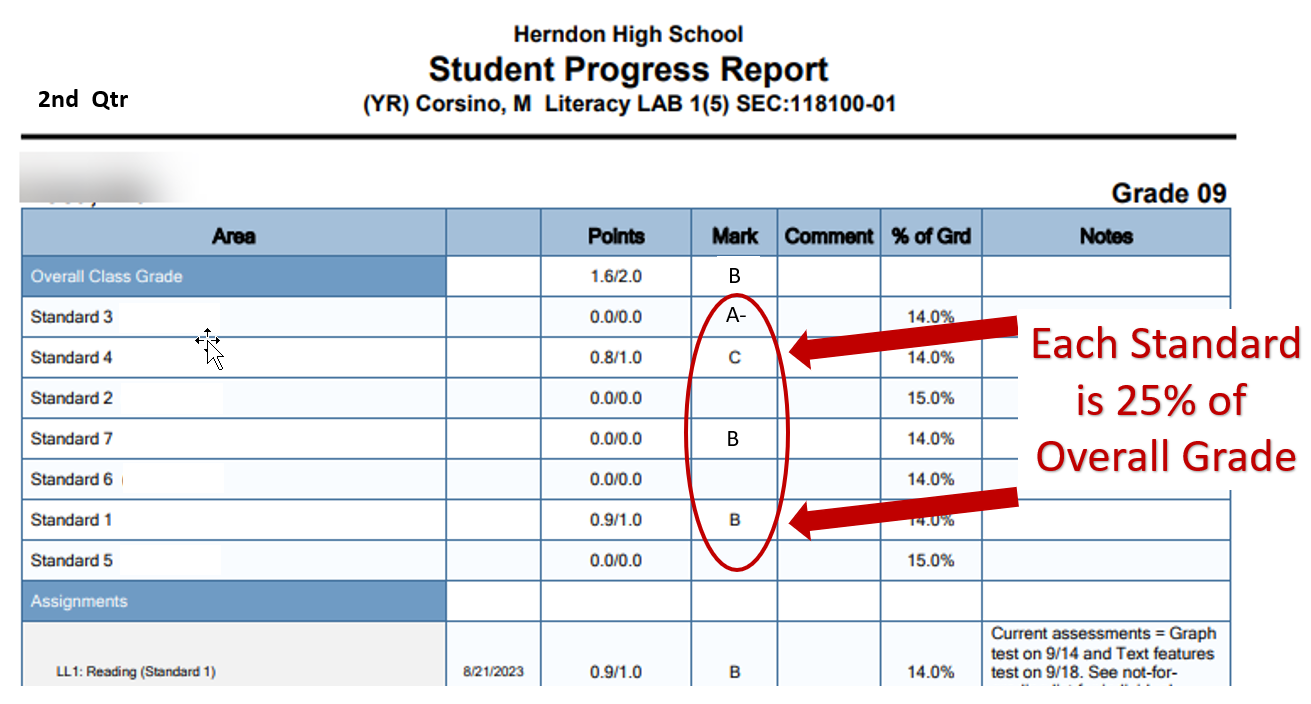
Quarter 3
The third quarter picks up with all of the work from Quarters 1 and 2 still showing. At this point, the student’s grade is an average of the 6 standards taught/assessed by the end of Quarter 3.

Quarter 4
And finally, at the end of the year, the student has learned all of the standards and has grades for each. These 7 standards will average together for the one overall grade of B here. Please note there are 7 standards for this class, but the number of standards will vary from course to course based on state/other requirements.
Keep in mind that this is a very simplistic view. In a real gradebook, there may be changes/improvements in the grades for individual standards. Here we kept each standard grade the same to give you an overview of how a rolling gradebook works throughout the school year.
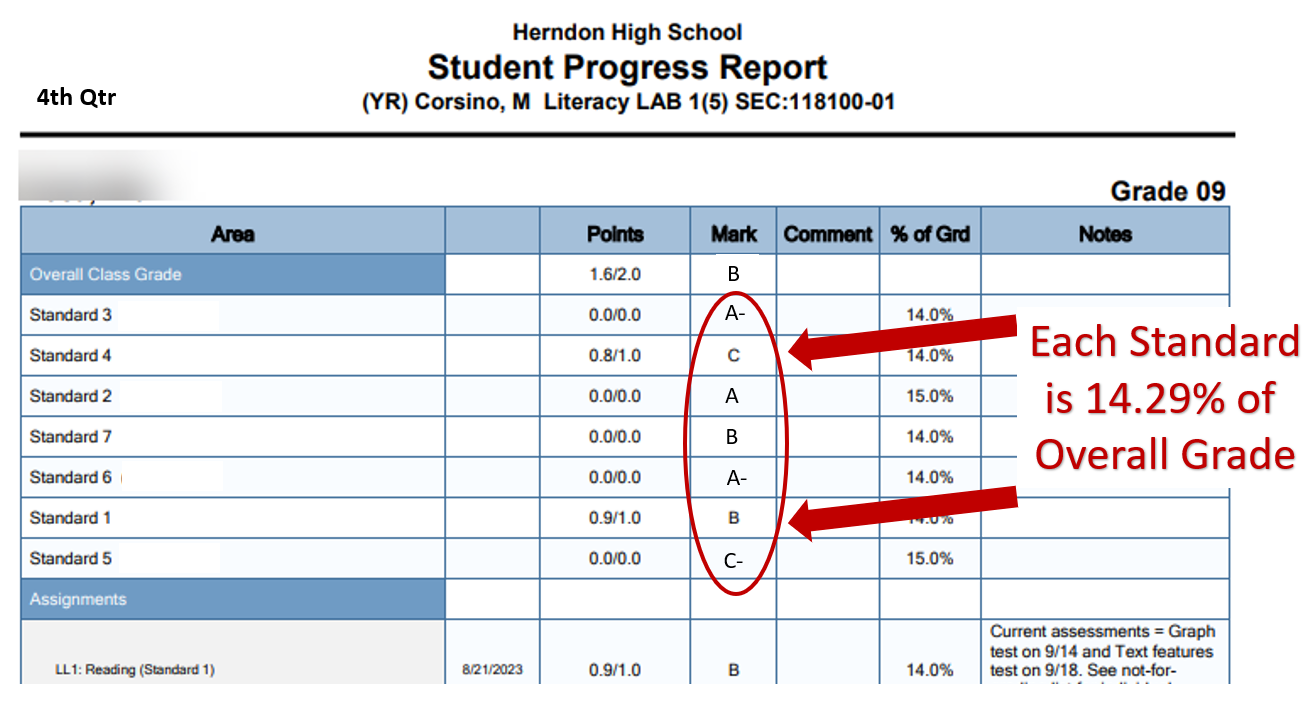
A Note about Transcripts and Senior Grades
- Transcripts will still only show the final grade at the end of the school year. Quarterly grades have never appeared alongside final grades.
- Senior “7th Semester Transcripts” will be sent to colleges of their choice. These transcripts will show grades after the 1st semester this year. Teachers/Staff are well-aware of the importance of these grades.
- Eligibility is typically determined at the semester mark for student activities. Teachers/Staff are well-aware of the importance of these grades.

